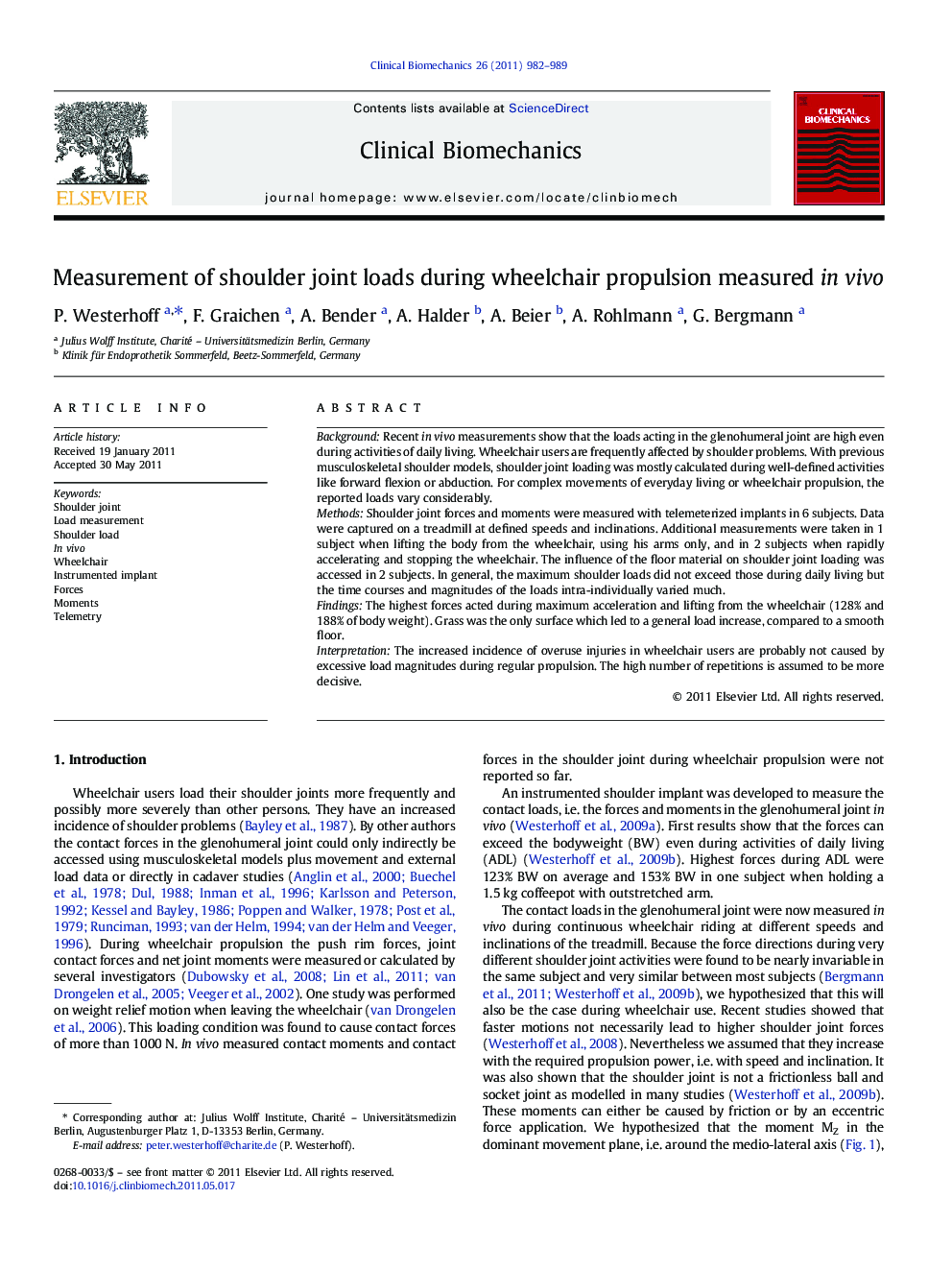| Article ID | Journal | Published Year | Pages | File Type |
|---|---|---|---|---|
| 4050533 | Clinical Biomechanics | 2011 | 8 Pages |
BackgroundRecent in vivo measurements show that the loads acting in the glenohumeral joint are high even during activities of daily living. Wheelchair users are frequently affected by shoulder problems. With previous musculoskeletal shoulder models, shoulder joint loading was mostly calculated during well-defined activities like forward flexion or abduction. For complex movements of everyday living or wheelchair propulsion, the reported loads vary considerably.MethodsShoulder joint forces and moments were measured with telemeterized implants in 6 subjects. Data were captured on a treadmill at defined speeds and inclinations. Additional measurements were taken in 1 subject when lifting the body from the wheelchair, using his arms only, and in 2 subjects when rapidly accelerating and stopping the wheelchair. The influence of the floor material on shoulder joint loading was accessed in 2 subjects. In general, the maximum shoulder loads did not exceed those during daily living but the time courses and magnitudes of the loads intra-individually varied much.FindingsThe highest forces acted during maximum acceleration and lifting from the wheelchair (128% and 188% of body weight). Grass was the only surface which led to a general load increase, compared to a smooth floor.InterpretationThe increased incidence of overuse injuries in wheelchair users are probably not caused by excessive load magnitudes during regular propulsion. The high number of repetitions is assumed to be more decisive.
